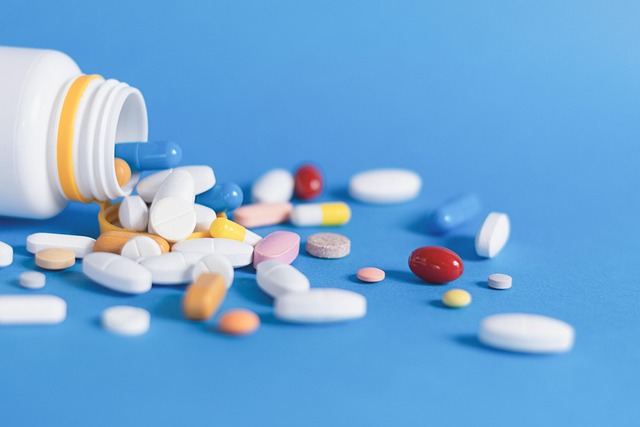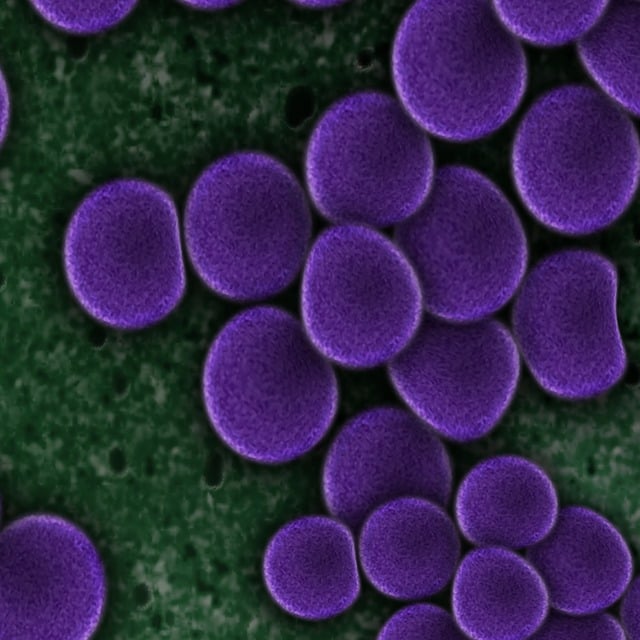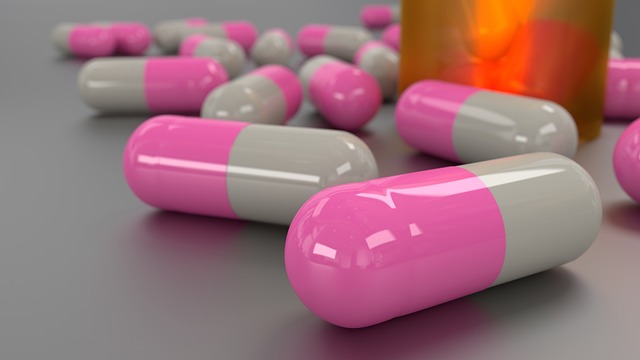GLP-1 receptor agonists are a groundbreaking class of GLP-1 drugs that mimic natural hormones to offer multiple therapeutic benefits for type 2 diabetes management. By binding and activating GLP-1 receptors, these drugs regulate blood sugar levels, promote weight loss, reduce appetite, lower cardiovascular risks, and slow kidney disease progression. Key agonists include exenatide, liraglutide (peptide drugs), and semaglutide (small molecule). While generally well-tolerated, GLP-1 drugs can cause gastrointestinal issues, decreased appetite, and hypoglycemia. Current research focuses on enhancing their effectiveness and expanding therapeutic applications beyond diabetes management, with promising future prospects in weight loss interventions and cardiovascular protection.
“GLP-1 receptor agonists, or GLP-1 drugs, represent a groundbreaking class of medications in diabetes management and weight loss treatments. This article provides an extensive overview, exploring their mechanism of action, diverse forms (peptides vs. small molecules), wide-ranging benefits, potential side effects, and current clinical applications. Delve into the intricate world of GLP-1 drugs to understand how these ‘game changers’ are transforming diabetes care and beyond.”
What are GLP-1 Receptor Agonists?

GLP-1 receptor agonists are a class of drugs designed to mimic and enhance the natural effects of glucagon-like peptide-1 (GLP-1), a hormone produced in the intestine. These agonists bind to and activate GLP-1 receptors in various parts of the body, leading to multiple therapeutic benefits. By stimulating these receptors, they can help regulate blood sugar levels, promote weight loss, and reduce appetite.
This innovative approach has revolutionized diabetes management, offering a more natural way to control glucose levels compared to traditional insulin therapy. GLP-1 drugs not only assist in glycemic control but also have additional advantages, such as reducing cardiovascular risks and slowing the progression of kidney disease in patients with type 2 diabetes.
How Do GLP-1 Drugs Work?

GLP-1 drugs work by mimicking the effects of the natural hormone glucagon-like peptide-1 (GLP-1), which is secreted in response to food intake. This hormone plays a crucial role in regulating blood sugar levels by stimulating insulin production and reducing glucagon release, thereby lowering blood glucose. GLP-1 receptor agonists are synthetic versions of this hormone that bind to specific receptors in the body, activating the same biological pathways as natural GLP-1.
These drugs enhance insulin secretion from the pancreas in a glucose-dependent manner, meaning they stimulate insulin only when blood sugar levels are high, helping to improve glycemic control. Additionally, they slow gastric emptying, which leads to a feeling of fullness and reduced appetite. This dual action makes GLP-1 drugs effective in treating type 2 diabetes by not only lowering blood sugar but also aiding in weight management, offering a more comprehensive approach to metabolic health.
Types of GLP-1 Agonnists: Peptides vs. Small Molecules

GLP-1 receptor agonists can be broadly categorized into two main types: peptides and small molecules. Peptide GLP-1 drugs, such as exenatide and liraglutide, are synthetic versions of the naturally occurring hormone glucagon-like peptide-1 (GLP-1). They mimic the actions of endogenous GLP-1 by binding to and activating its receptors, leading to improved insulin secretion and reduced glucagon release. Peptides have a longer duration of action compared to other GLP-1 drugs but require injection, which can limit patient adherence.
On the other hand, small molecule agonists, like semaglutide, offer a more convenient oral administration route while maintaining similar therapeutic effects. These compounds are designed to mimic key aspects of GLP-1’s biological activity and have been shown to improve glycemic control in patients with type 2 diabetes. Small molecules generally provide faster onset of action but may have shorter durations compared to peptides, necessitating more frequent dosing.
Benefits and Therapeutic Uses of GLP-1 Drugs

GLP-1 drugs offer a range of benefits, primarily in the field of diabetes management. They mimic the effects of the natural hormone glucagon-like peptide-1 (GLP-1), which is secreted in response to food intake. By activating GLP-1 receptors, these drugs stimulate insulin secretion and suppress glucagon release, leading to improved blood sugar control. This action helps lower blood glucose levels after meals, providing significant advantages for individuals with type 2 diabetes.
In addition to their diabetic benefits, GLP-1 drugs have shown promise in weight management. They can increase feelings of fullness and reduce appetite, contributing to a decrease in calorie intake. This effect is particularly valuable as obesity is a significant risk factor for various metabolic disorders. Furthermore, some GLP-1 drugs have been approved for chronic weight management, offering a new therapeutic option for those struggling with overweight or obesity.
Common Side Effects and Considerations

While generally well-tolerated, GLP-1 drugs can cause several side effects, many of which are related to their action on the gastrointestinal system. Common issues include nausea, vomiting, diarrhea, and stomach pain. These symptoms tend to be more prevalent during the initial weeks of treatment but often improve over time. Patients may also experience decreased appetite, leading to potential weight loss, as GLP-1 drugs can suppress hunger.
Other considerations include the risk of hypoglycemia when used in combination with other diabetes medications that lower blood sugar levels. Moreover, GLP-1 receptor agonists can cause respiratory issues in some individuals, such as pneumonia or asthma exacerbation. As with any medication, it’s essential to weigh these potential side effects against the benefits of GLP-1 drugs for each patient’s unique circumstances.
Mechanisms of Action: Key Processes

GLP-1 receptor agonists, a class of drugs designed to mimic the effects of the gut hormone glucagon-like peptide-1 (GLP-1), offer a multifaceted approach to managing diabetes and promoting weight loss. Their primary mechanism involves stimulating insulin secretion in a glucose-dependent manner, helping to lower blood sugar levels. This process is particularly crucial for type 2 diabetics who struggle to produce enough insulin on their own.
Beyond insulin modulation, GLP-1 drugs also slow gastric emptying, leading to increased feelings of fullness and reduced appetite—a double-pronged effect that can aid in weight management. These actions collectively make GLP-1 receptor agonists a versatile tool in the treatment arsenal for both diabetes and obesity.
Current Research and Future Prospects

The current research landscape surrounding GLP-1 receptor agonists is rich with studies focusing on refining existing drug formulations and exploring new therapeutic avenues. Scientists are investigating ways to enhance the efficacy and duration of action of GLP-1 drugs, aiming to provide better glycemic control for patients with type 2 diabetes. One promising area of inquiry involves combining GLP-1 therapies with other metabolic pathways to improve overall treatment outcomes.
Looking ahead, future prospects for GLP-1 drugs are exciting. The potential to expand their use beyond diabetes management, such as in weight loss interventions and cardiovascular protection, is a significant area of interest. As research advances, personalized medicine approaches may become more prevalent, allowing for tailored GLP-1 therapy based on individual patient needs. These ongoing developments hold the key to transforming the lives of those living with metabolic disorders and opening new frontiers in healthcare.
GLP-1 Agonists in Clinical Practice

GLP-1 receptor agonists have become a significant class of drugs in clinical practice, particularly for the management of type 2 diabetes. These medications mimic the effects of the natural hormone glucagon-like peptide-1 (GLP-1), which stimulates insulin secretion and suppresses glucagon release, leading to improved glycemic control. The most commonly prescribed GLP-1 drugs include exenatide and liraglutide, known for their long-lasting effects and once-daily administration, making them convenient options for patients.
In clinical settings, GLP-1 agonists offer several benefits. They not only help lower blood sugar levels but also contribute to weight loss, a valuable addition for managing obesity-related comorbidities. Furthermore, these drugs have been associated with reduced cardiovascular risk, adding to their overall value in diabetes treatment and prevention.
